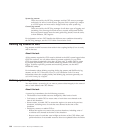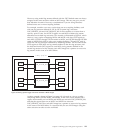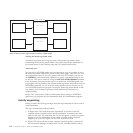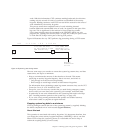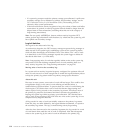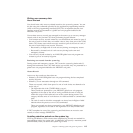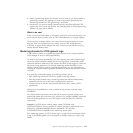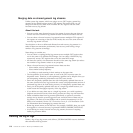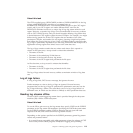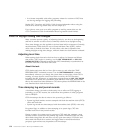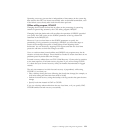Writing user-recovery data
About this task
You should write only recovery-related records to the system log stream. You can
do this using the commands provided by the application programming interface
(API) or the exit programming interfaces (XPI). This is important because user
recovery records are presented to a global user exit program enabled at the
XRCINPT exit point.
User-written recovery records are managed in the same way as recovery manager
records, and do not prevent CICS from performing log-tail deletion:
v User-written recovery records written by user transactions are treated as part of
the unit of work in which they are written—that is, they form part of the UOW
chain. CICS shunts user-written recovery records as part of the unit of work, if
the unit of work fails for any reason. These are:
– Recovered by in-flight unit of work recovery during an emergency restart
– Recovered by shunted unit of work recovery during both warm and
emergency restarts.
v User recovery records written by an XAKUSER global user exit program are
written as part of an activity keypoint.
Retrieving user records from the system log:
During warm and emergency restarts, CICS scans the system log backwards. If,
during this backwards scan, CICS finds active user records, they are presented to a
global user exit program enabled at the XRCINPT exit point.
About this task
Active user log records are those that are:
v Written by an XAKUSER global user exit program during the last completed
activity keypoint.
v Written by a user transaction through an API command.
These user records, which form part of a unit of work chain, are deemed to be
active only if:
– The high-order bit of the JTYPEID field is set to 1.
These records are presented to your XRCINPT global user exit program,
regardless of the state of the unit of work, provided the unit of work lies
within the scope of the backward scan of the system during restart. This
category includes units of work that are in a backout-failed or commit-failed
state.
– The unit of work in which the command was issued was in-flight or failed
indoubt when the previous run of CICS terminated.
These user records are always presented to your XRCINPT global user exit
program, regardless of the state of the high-order bit in the JTYPEID field.
If CICS completes its scan of the system log and finds there are no active user
records, it issues message DFHER5731.
Avoiding retention periods on the system log
CICS log tail deletion, which ensures that completed log records are retained for
two complete activity key points only, is inhibited if you specify a retention period
(RETPD=dddd) when you define the system log to MVS.
Chapter 11. Defining system and general log streams 115




